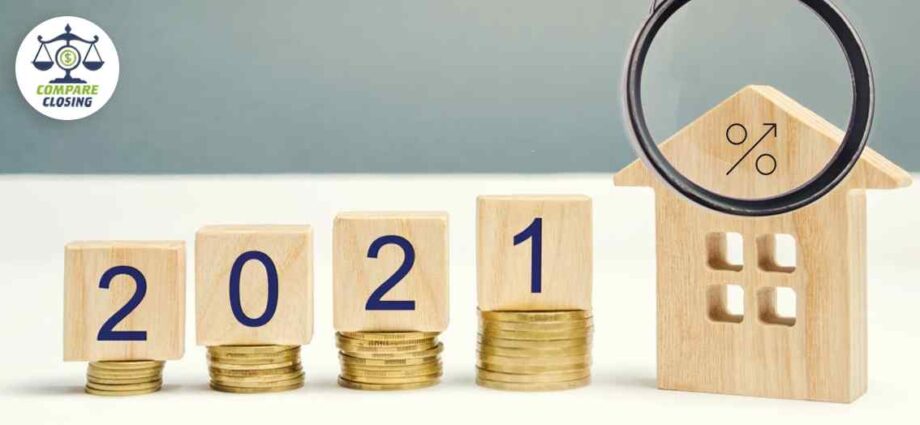Warning: Undefined variable $custom_content in /home4/comcompare/public_html/mortgagenews/wp-content/plugins/code-snippets/php/snippet-ops.php(582) : eval()'d code on line 7
Last updated on February 3rd, 2021 at 11:24 am
According to a recent forecast by the Mortgage Bankers Association, two things stand out. One is, 2020 will prove to be the second-biggest mortgage year in history.
Topping $3 trillion will put it only behind 2003 in single-family mortgage production history.
Second, the MBA joined the GSEs and other economists who forecast a significant drop in mortgage production in 2021, with most estimating declines in the range of $700 – $800 billion, year over year.
Jerome Powell Chair of the Board of Governors of Federal Reserve had said, the Feds would keep rates low for the foreseeable future, the Fed will likely keep short rates low, but mortgage rates and some longer-term Treasuries likely won’t below.
Following are the reasons why upward pressure on mortgage rates could hold up the refinance wave and cut overall national origination volume in 2021:
- The Fed: The Federal Reserve is the single biggest buyer of agency mortgage-backed securities (MBS) in the world. According to the Urban Institute, “In March the Fed bought $292.2 billion in agency MBS, and April clocked in at $295.1 billion, the largest two months of mortgage purchases ever; and well over 100% of gross issuance for each of those two months. After the market stabilized, the Fed slowed its purchases to around $100 billion per month in May, June, and July. Fed purchases in July were $104.6 billion, 35 percent of monthly issuance, still sizable from a historical perspective.”
- The Debt: The national debt is now at 100% of GDP, the highest level since WWII. As per CBO’s Sept paper, “By the end of 2020, federal debt held by the public is projected to equal 98% of GDP. The projected budget deficits would boost federal debt to 104% of GDP in 2021, to 107% of GDP (the highest amount in the nation’s history) in 2023, and to 195% of GDP by 2050.” The CBO’s projections for the U.S. deficits looking forward and the mounting debt load threaten the nation’s ability to do many things, as the majority of spending will be on mandatory expenditures that include interest on the growing debt load. So the need to finance these deficits through new issuance of treasuries will put upward pressure across the stack of interest rates.
- The GSE Capital Rule: This rule is a critical component of FHFA’s plan to release the GSEs from conservatorship. The proposed rule is considered onerous by many with the consensus view stating in comment letters that, rates would rise between 20-30 bps.
- The Adverse Market Fee: This arbitrary add-on for most refinance mortgages from the GSEs of 50 bps equates to roughly an increase in the rate of .125. This goes into effect on Dec. 1 of this year.
- Release from Conservatorship: FHFA Director Calabria is working feverishly to release Fannie and Freddie from conservatorship and moving at a pace to lock in as much of this as possible quickly. There have been outcries from MBS investors, including some of the largest buyers.
In a letter to Mark Calabria, director of the Federal Housing Finance Agency, PIMCO said ‘freeing the companies’, would be interpreted by investors as an end to the government’s guarantee of the MBS.
“That would boost mortgage rates and force some investors to sell the bonds,” the PIMCO executives said. Investors would demand a higher return for the increased risk.
“Mortgage rates will increase, homeownership will likely suffer and the national mortgage rate will no longer exist,” the executives wrote.
“2020 has been a banner year for mortgage originators and the millions of households who have benefitted from record-low rates through refinancing.
The industry will enjoy this boom for a while longer, but our expectation is that the refi wave is cresting,” said Fratantoni of MBA in his recent Housing wire article.
The rally we are experiencing this year is due to interventions in the market because of the pandemic recession.
Normalization will take out buyers, eliminate the supply “short,” and inflation will ultimately do its thing on rates just enough to cut the market by 25%-30% in 2021 and a bit more in 2022.
Reference Source: Housingwire



I think this is one of the most significant info for me.
And I’m glad reading your article. But want
to remark on some general things,
The web site style is wonderful,
the articles is really excellent
: D. Good job, cheers